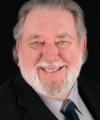Private schools in Canada—not what you think
A lingering myth about private schools continues to cloud public perception in Canada—that private schools are only for the wealthy few.
A recent study using 2013/14 enrolment data provided by provincial ministries of education for every independent school (that’s a more appropriate term to describe schools not ensconced in the public systems) in Canada revealed a landscape contrary to the stereotype.
It turns out that rather than exclusive enclaves for the urban elite, independent schools in Canada come in a wide assortment of types and locations, and serve a remarkable range of educational preferences.
In 2013/14, Canada’s 10 provinces were home to 1,935 independent schools, with 368,717 students from Kindergarten to Grade 12, accounting for 6.8 per cent of total school enrolments.
Consider first the urban enclave stereotype. Although Canada is overwhelmingly an urban society (more than 80 per cent of the population lives in urban areas), fully 37.1 per cent of all independent schools are located outside of large urban areas, with 22.1 per cent in rural areas and 15 per cent in small or medium-sized centres. Clearly, the “urban” stereotype doesn’t hold for Canada’s independent schools.
Most importantly, consider the types of schools on the landscape.
Almost half (48.6 per cent) of all independent schools in Canada have a religious orientation. The study found that a third (30.1 per cent) of independent schools in the country are non-Catholic Christian, 8.4 per cent Catholic, 4.9 per cent Islamic, and 4.5 per cent Jewish. Together they enroll almost 180,000 students. It’s not wealth but religion, and its accompanying cultural implications, that define these independent schools.
Independent schools also bring variety to Canada’s schooling landscape because of what they teach and how they teach. Almost one third of all independent schools (30.0 per cent) in the country declare a special program emphasis or unique approach to teaching.
Some offer a special emphasis in curriculum by focusing, for example, on arts, athletics, language or STEM (science/technology/engineering/math) subjects. Others, such as Montessori or Waldorf schools, offer distinct approaches to teaching and learning. Still others cater largely to special needs or distance-learning students. In 2013/14, taken together, these specialty schools enrolled almost 100,000 students.
But what about independent schools that might fit the “elitist” caricature? According to the study, only 4.7 per cent of all independent schools in Canada feature characteristics commonly associated with elite preparatory schools. Of the almost 370,000 students attending independent schools across the country, less than 45,000 students (12.1 per cent) attend this type of school.
The numbers tell the tale. Old myths about independent schools in Canada simply aren’t supported by the facts. They are not defined by exclusivity. They exist for parents and students who want something other than what they can find in public schools. One in 15 Canadian students attend independent schools, which are often rural and have a religious or specialty emphasis. And again, less than five per cent of these schools conform to the traditional stereotype of a private school.
It’s time we recognize the diverse nature of “the other 95 per cent” of independent schools in Canada. Public schools cannot and do not fulfill the needs of all parents and students. Parents are choosing independent schools to fulfill those needs.
Authors:
Subscribe to the Fraser Institute
Get the latest news from the Fraser Institute on the latest research studies, news and events.


